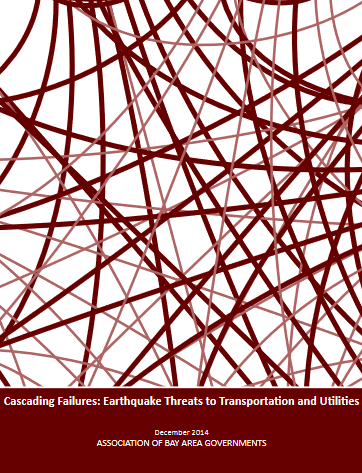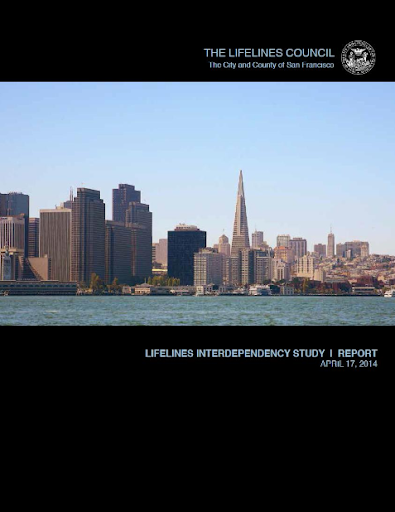Infrastructure
Regional disasters have multiplying effects when critical infrastructure sustains damage, compromising utilities, water and transportation systems. The Resilience Program has identified resources useful for local governments and special districts to understand and plan for the impacts of hazard events across systems.
Interdependencies: Local Governments and Special Districts
The systems that make life in the Bay Area possible --like water, electricity, communications, roads and transportation systems-- are interdependent. A hazard event can have consequences across these systems and responsibilities, disrupting residents’ ability to access services they need, or even to shelter in place. Conversely, safe and strong infrastructure systems, and the speedy recovery of those systems, will ensure that the Bay Area remains strong after an earthquake.
For this reason, it is critical for local governments to coordinate resilience planning and policy with the providers your community relies on for critical services, developing an understanding of interdependencies and devising plans for coping with systems failures. The resources provided here highlight the challenges presented when local hazards impact infrastructure. Specifically, they consider the impact of earthquakes on transportation, water, waste water, energy systems, electricity, gas, fuel, communications, etc.
Special districts, including water districts, fire districts, utilities and transit agencies, may also find these resources useful for policy and planning.
Cascading Failures: Earthquake Threats to Transportation and Utilities

The immediate operation of the Bay Area’s 24 airports in the wake of a major seismic event provides valuable air functions during disaster response, and are a necessity for quick recovery of societal and economic functions. A single earthquake event is unlikely to cause damage at every Bay Area airport, but damage to key infrastructure systems could result in outages at many or all airports. This report maps airports, roadways, passenger rail, fuel, electric and water systems and their significant consequences for airports following a major earthquake in the region.
This report includes an assessment of:
- Earthquake Hazards & Scenarios
- Airports
- Roads & Passenger Rail
- Fuel System
- Electric System
- Water System
- Interdependencies
Lifelines Interdependency Study

A study of the different lifeline systems operating within the San Francisco city limits and the impact on these systems independently and interdependently following a magnitude 7.9 earthquake on the San Andreas fault in order to help expedite response and restoration planning among lifeline operators. This report also identifies key assets and restoration schemes to prioritize post-disaster restoration and reconstruction activities for the city, and ultimately the region, following a major disaster. It includes a review of:
- A scenario repeating the conditions of the historic 1906 quake
- Potential lifelines system impacts, damage and restoration timelines
- Lifeline interdependency analysis
- Lifeline system performance and resiliency standards
- Areas for more detailed study
- Near- and long-term recommendations for coordinated mitigation planning and preparedness

